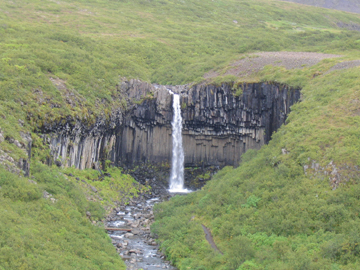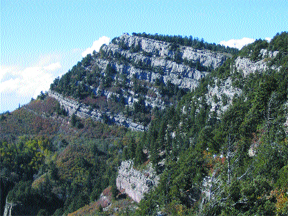Every month, we'd like to feature one of your photos from anywhere in the world and invite other readers to guess where it was taken. Look every month in the print Geotimes for a new photo. Following are clues, answers and winners from past issues.


| Do you have slides and photos you've
collected from field work or vacations? Every month, we'd like to feature one of your photos from anywhere in the world and invite other readers to guess where it was taken. Look every month in the print Geotimes for a new photo. Following are clues, answers and winners from past issues. |
 |
| Send answers for the April 2005 Where on Earth?
contest, which appears in the print magazine, to Geotimes by April
28 (or postmarked by this date). From those answers, Geotimes staff
will draw the names of 10 people who will win Where on Earth? T-shirts.
And from those 10 names, we will draw the names of two people who will win
a Brunton compass.
Click here
to submit a guess for this month's Where on Earth?
contest. Submit
photos for Where on Earth? |

|
Clues: 1. This waterfall is the most popular attraction in the second oldest national park in the host country. The national park used to be a manor farm, and the estate was later owned by a church and then royalty. Ruins of a farmhouse still remain in the park. 2. The river and waterfall cut through broad columns of basalt, which can be seen surrounding the falls in the shape of an ampitheater. It is from the basalt that the waterfall gets its name, not the color of the water. 3. An overlook on the main trail to the waterfall offers broad views of an outwash plain that has evidence of many glacial floods caused by volcanic activity.
Name the waterfall and its location. Scroll down for the answer |
| Answer: Check back next month for the answer to and winners of the March Where on Earth? in Geotimes. |

|
Clues: 1. This feature bears a characteristic that John W. Powell recognized in the early 20th century: a gap in the rock record between ancient granite and overlying sandstone. 2. This feature takes its name from a native word for a vibrant-colored fruit. 3. The world’s longest cable tram runs up the side of this mountain to a total elevation higher than 10,000 feet. In the 40 years the tram has been running, it has carried more than 8 million people to the peak and back.the feature and its location.
Name the feature and its location. Scroll down for the answer |
| Answer: The Great Unconformity at Sandia Peak near Albuquerque, N.M., is where approximately 300-million-year-old limestone and sandstone directly overlay 1.8-billion-year-old granites. “Sandía” is Spanish for “watermelon” and may refer to the mountains’ pink hue at sunset. Photo by Lisa Pinsker. |
February
2005 Winners
John Bahl (Baltimore, Md.)
Alicia Dekle (Albuquerque, N.M.)
G. Thomas Farmer (Las Cruces, N.M.)
Devinne Funk (Fort Edward, N.Y.)
John Keller (Denver, Colo.)
Richard Lozinsky (Fullerton, Calif.)
Tim Martin (Greensboro, N.C.)
Bob Mozer (Remsenburg, N.Y.)
Karin Rice (Long Beach, Calif.)
Scott Tinker (Austin, Texas)
 |
Geotimes Home | AGI Home | Information Services | Geoscience Education | Public Policy | Programs | Publications | Careers |